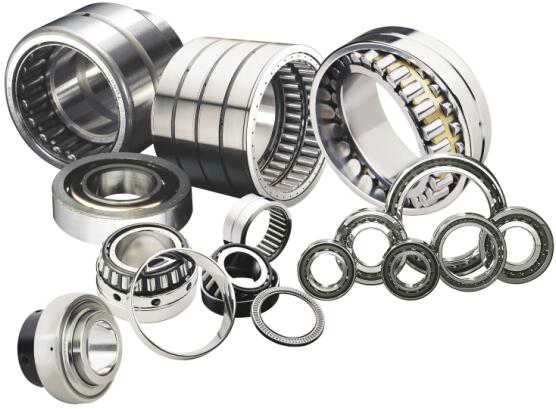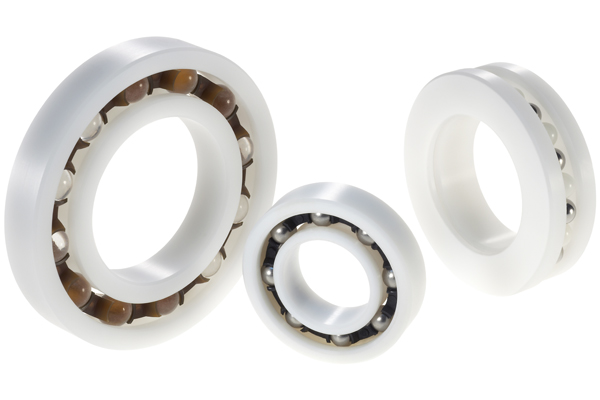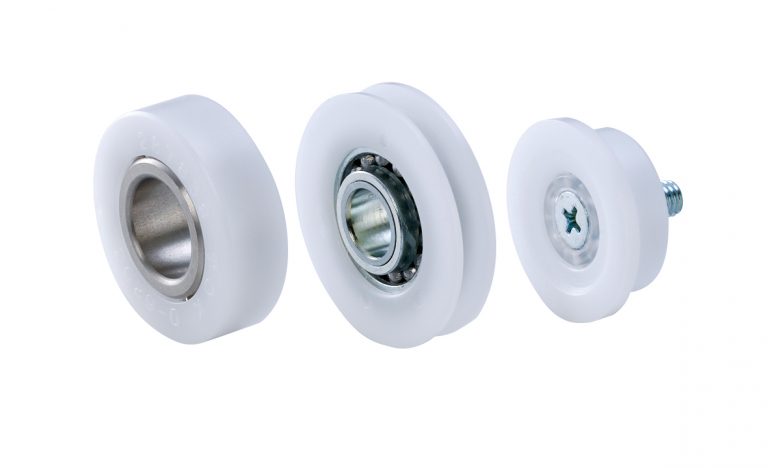How Different Bearing Materials can affect bearings performance?
Although bearings are mechanically quite simple, choosing the right bearing material to match the loading and environmental conditions can drastically affect bearings performance.
Whether it’s in a food manufacturing plant, on an automotive assembly line or even in consumer products like skateboards and power tools, bearings play a vital role in reducing friction between the moving parts in a mechanical system.
Bearings come in all shapes and sizes, however, the most common types include plain bearings, which consist of just a shaft rotating in a hole aided by a sleeved section, and rolling-element bearings, made up of balls or cylindrical rollers between the rotating inner and outer rings. As well as this, bearings contain other elements such as raceways to guide the balls and cages to ensure correct alignment and spacing.
The bearing housing and structure is most commonly made from steel, the raceways and cages (or retainers) are typically made from steel or plastic and the balls can be made from steel, ceramic or plastic.
To allow design engineers to easily select the right material for the job, Matmatch is aiming to become the largest material property database freely accessible on the internet today. Within this database, there are several material types that can be selected for bearings.

Steel bearing material
Steel is widely available and performs well under high loading due to its high radial and static load capacity, allowing it to achieve a high speed of rotation without posing a risk of permanently deforming the balls.
This is because most bearings in industrial applications are made using chrome steel (SAE 52100). This has higher levels of carbon content and about 1.5 per cent chromium content. The manufacturing process involves a controlled heat treatment stage that takes the surface hardness to around 60–64 on the Rockwell hardness scale (HRc). This not only gives chrome steel a smoother, harder finish, it also means that it can withstand higher temperatures of up to 120 degrees Celsius.
However, steel is heavy, noisy and the low chromium content of chrome steel means that it has a low resistance to chemicals and corrosion. This means that, despite the high hardness, any exposure to water and acidic compounds in the lubricant, or even dust and debris, can lead to increased wear, and fatigue on the steel balls and raceway; the prolonged impact of which, if left unchecked, will lead to the ultimate catastrophic failure of the bearing.
This is particularly important for food manufacturing environments, for example, where the ambient levels of heat and humidity regularly change. One machine may be frying and baking food items, while another machine further down the line may be chilling and flash freezing the product.
To this end, bearing users may consider opting for a stainless steel that typically contains a higher chromium content of around 18 per cent, which gives it a higher level of corrosion resistance.
AISI 440C stainless steel is made using a standard manufacturing process that involves rapid heating and quenching, which makes the steel Martensitic, meaning that it gives the steel a hard crystalline structure.
So, although 440C stainless steel has a slightly lower hardness — and a lower load carrying capacity — than chrome steel, it can sustain temperatures typically up to 250 degrees Celsius. This is useful for bearing applications where a high speed needs to be maintained continuously.
One of the disadvantages of both of these types of steel is that their carbon content gives them magnetic properties that make them unsuitable for use in medical equipment such as MRI imaging machines. Here, engineers should consider austenitic stainless steels such as AISI 316 (carbon – 0.08% Max).
The low carbon content makes this type of steel non-magnetic. However, it is important to note that this also prevents the steel from being effectively hardened so has a low load carrying capacity and is therefore limited to lower rotational speeds.

Ceramic bearing material
For pharmaceutical, food and chemical processing applications, bearings can be exposed to high levels of chemical, detergent and acidic conditions and placed under heavy loads. Here, engineers may be better served by bearings that use ceramic balls. Although the retainers and rings may still be made of steel, the balls will be made from ceramic.
Ball bearings made from ceramic materials such as silicon nitride (Si3N4) offer smoother surfaces, lower thermal expansion, high hardness (over 70 HRc), low corrosion and low electrical conductivity.
Ceramic ball bearings can be around 60 per cent lighter, 120 per cent harder andaround 70 per cent stiffer than their steel counterparts, while still achieving a much higher temperature rating of over 700 degrees Celsius.
Ceramic balls also require less lubrication — often being capable of lubrication-free operation — offer lower friction levels and remain cool at high speeds. Crucially, ceramic bearings can be used in non-magnetic applications.
The downside is that ceramic bearings can suffer from lower load capacities and are more sensitive to thermal shock, which can lead to cracking. In these situations, choosing alternative types of ceramic such as zirconia (ZrO2) and silicon carbide (SiC) may offer the best result.

Plastic bearing material
Plastic is ideal for non-magnetic, non-conductive and highly corrosive areas. Here, the bearings offer a very lightweight yet high strength alternative. Plastics used in bearings can range widely, including materials such as polyoxymethylene (POM-C), general polyamide (PA6/66), polyetheretherketone (PEEK), polyvinylidene fluoride (PVDF), polytetrafluoroethylene (PTFE, Teflon), and phenolic impregnated fibres.
Plastics are good at normal and high speeds; they are self-lubricating, corrosion resistant and operate quietly and smoothly, capable of reaching temperatures up to 150 degrees Celsius. This is achieved because of plastic's low coefficient of friction (COF), which remains consistent over time as plastic exhibits little wear.
However, caution should be exercised at very high temperatures and in applications where the bearing is subject to high loads because this can cause permanent deformation of the balls and cage.
As industrial and consumer applications become more complex, it is important that engineers not only select the right type of bearing, but the right bearing material for the application. Using a materials database is the first step on the journey to better performance, cost savings and improved product life.





